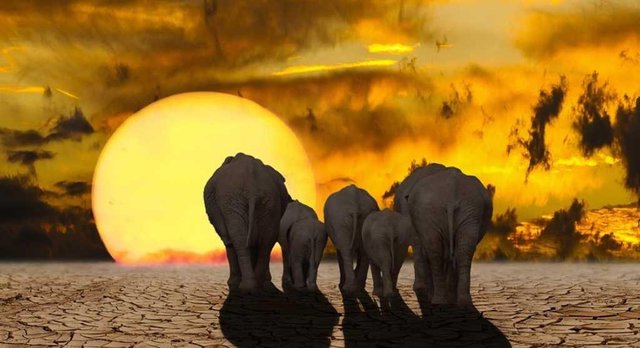
Climatologists describe the heat disaster in the country as a true local and Indian deviation in the weather, and the growing influence of the El Nino phenomenon, which is a natural climate anomaly. In short, the essence of this anomaly is the rise in surface water level temperature (an average of 4-5 ° from an average value of 26 °) in the eastern Pacific Ocean, between the west coast of South America and South Asia. Anomalies manifest themselves once in 3-7 years, and their effects persist throughout the year. Under ordinary circumstances, beyond temperature fluctuations, trade winds keep the warm waters of the oceans in the western Pacific tropical zone.

If the balance is disrupted, expect a problem. With the advent of El Niño, the warm waters of the Pacific Ocean from the west are directed to the east. Consequently, in both tropical and equatorial latitudes, the water temperature rises. And this in turn leads to the fact that climate phenomena bring changes in the atmosphere and, as a result, hurricanes, droughts, fires. All of these consequences lead to the mass death of humans and animals.

Increasing the air temperature to abnormal values creates a threat to life because the heat is too hot from the body. The human body loses its ability to maintain a normal body temperature under extreme conditions, which causes severe consequences, especially for people with unstable cardiovascular systems. In the risk group, in the first place, get parents and young children.
Thus, by 2015 the peak temperatures in the capital and some countries reach + 47 ° / + 50 °. Temperature may exceed an average of seven degrees. Most of the abnormal heat there were casualties in Telangan, Andrha-Pradesh, little in Orissa and West Bengal. A large number of deaths were recorded in a group of men over the age of 50, and whose work was linked to being on the road. State hospitals have been declared a special position due to the enormous heat pressures among the population.
The victims' daily figures are more like reports from the battlefield:
- May 27, Andhra Pradesh: 852 people died, in Telangana state: 266;
- On May 28-29, the death toll was more than 1,800 (number of deaths per day close to 500);
- By May 30, the number killed was 2207;
- on June 2, there were 2500 deaths, just like many people who died for four days in May 2015.
This time - April and May - warmest across India, temperatures are almost universally kept at around 40 ° and above.

By 2016, at least 200 people suffer from thermal overheating during the first hot days in southern India. The Indian Health Department reports daily about the victims. Most of the dead (70 people) recorded in the state of Telangan, especially among the rural population, were forced to work in the open sun. An even more difficult situation is in Orissa, where the heat comes a week later. Average daily temperatures across the country are set at around 46 °, at least 45 people died during the heat week of hell.
Not wanting to repeat the situation in 2015, authorities announced the emergency regime in the most "temperate" state. Residents are not advised to go out, at least from 11 to 13 noon, for the points of need to open up points for free drinking water and whey supplies. The country is forbidden to cook during the day. This is a forced measure, as the number of household fires increases, due to drought and strong winds, the roof of the burning hay is like a candle from a spark.

Under the ban there were several ceremonies related to the glorification of fire. Particular attention is paid to the fact that people do not burn grass in the fields, because violation of the ban is threatened with imprisonment.
Because of the anomalous heat, the reservoir dries up, there is a shortage of drinking water. In some areas the situation was so critical that authorities specifically transported water tanks to settlements. Drought has devastated use in most of the harvest, comes a massive die-off of livestock.

This situation repeats year after year. The Indian government has been forced to allocate more than $ 3.5 billion to deal with natural disasters, amounting to more than half selhoznuzhdy for the entire period of the financial year 2016-2017 cost.
Take a look at his India heat report:

